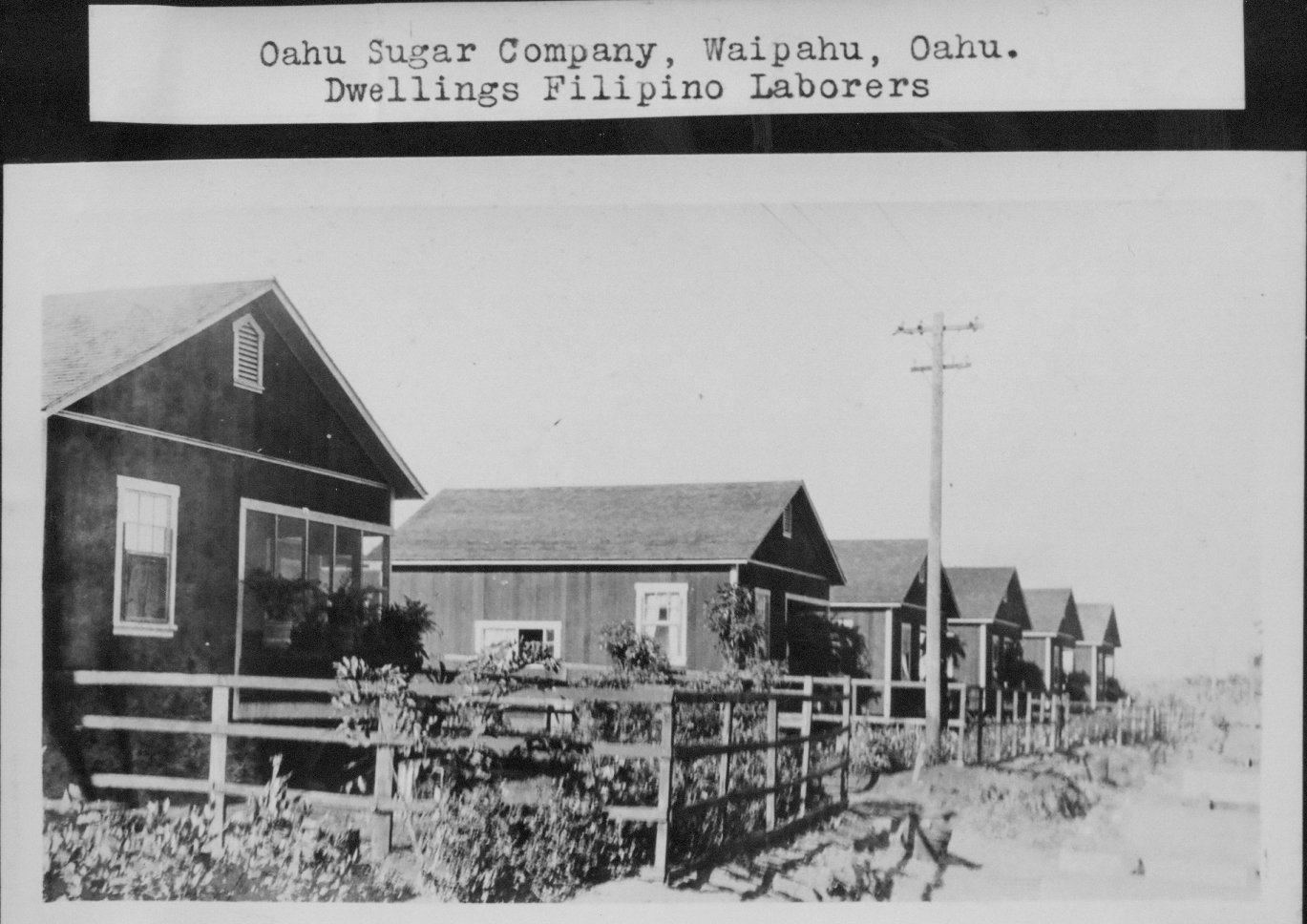“‘I doubt if any plantation was ever confronted from its very inception with a more Herculean task in clearing the land than we have seen,’ Ahrens reported.”
“‘Ridding ourselves of the tangled masses of lantana and mimosa were mere child’s play compared to that which did not show on the surface — stones, big stones, and close together. In fact, stones as big as houses.’”
“But in 1899, the harvest of O‘ahu Sugar’s first crop signaled the birth of a new plantation town.” (Star Bulletin)
“The idea of a 10,000-acre sugar company was inspired by a prospectus written by Benjamin F. Dillingham in 1894. The idea took root, and, led to the incorporation of O‘ahu Sugar Company.”
“The company was to be situated on the slopes of the Waianae and Koolau mountains, east of Honolulu … this arid land was mostly covered with rocks, lantana and guava.” (Plantation Archives)
Dillingham partnered with J Hackfeld and Company (Paul Isenberg) and Mark Robinson (who provided land for the mill site) to form the company, which was incorporated in March 1897.
“The O‘ahu Sugar Company … is one of the new plantations that is creating wide-spread interest. Having many natural advantages that are lacking in some other estates, O‘ahu is expected to be a great money maker.”
“The corporation was organized four years ago and 13,000 acres of land were secured, mostly leased, for sugar growing. Planting commenced at once under the supervision of August Ahrens, manager, who had then been connected with sugar plantations nineteen years.”
“There are now only 6,500 acres under cultivation, but some of it will yield ten tons to the acre, satisfactorily to the farmer in almost every instance. Some Japanese will clean up $300 at the end of the year and are ready to go back to Japan with their families. Prosperity in this case depends almost entirely upon the industry of the laborer.” (Paradise of the Pacific, April 1902)
The Company’s managers from 1897-1940 were: A. Ahrens (1897-1904); E.K. Bull (1904-1919); J.B. Thomson (1919-1923); E.W. Greene (1923-1937); and Hans L’Orange (1937-1956). (Plantation Archives)
The O’ahu Sugar Company (OSC) plantation and mill began in Waipahu as a development project of Benjamin F. Dillingham, who had leased land from James Campbell, prompting noted historian Muricio Michael’s observation: “The town of Waipahu is a child of O‘ahu Sugar [Company].”
O‘ahu Sugar Company’s first harvest was in 1900 and yielded 7,900 tons of raw sugar. The population of Waipahu grew as the plantation increased production and required more field and mill laborers, tradesmen, supervisors, and engineers.
By the late 1920s, Waipahu extended southward along Waipahu Road with a business district centered at Waipahu Depot Street, while residential areas were located both north of the mill and to the east along Waipahu Road.
By the 1930s, Waipahu “included second and third generations” that “had grown up on the plantation and considered Waipahu their home”. In 1940, Waipahu had a population of 6,900. (NPS)
The skilled employees at O‘ahu Sugar came primarily from Germany. As typical of plantations during this time period, O‘ahu Sugar faced a shortage of unskilled laborers with the exception of a small number of Hawaiian workers. Mostly laborers came from the Philippines, Japan, China, Portugal, and Norway.
Each employee received a house free of charge, complete with firewood, fuel, and water for domestic purposes. By the 1930s, garbage collection, street cleaning and sewage disposal were provided.
The plantation store sold produce and retail goods to employees at cost. Other store buildings were rented to tenants of various nationalities to give employees a wide choice in the selection of goods.
O‘ahu Sugar provided clubhouses, athletic fields, and playgrounds. Baseball was a favorite past time and O‘ahu Sugar’s team maintained an outstanding record in plantation league tournaments.
A hospital was built in 1920 and the services of a resident physician were provided free of charge to unskilled employees. There was a moderate charge to skilled employees and “outsiders”, people not employed with OSC, who sought medical assistance.
By 1925, the population of the plantation ranged between 9500-10,000 people. There were approximately 2,850 names on the payroll and it was estimated that at least ¾ of the residents of Waipahu earned a living in connection with the production of sugar.
The greatest portion of work performed at Oahu sugar was done on the “contract” or piecework system. For example, cutting and piling cane was paid for by the ton; plowing and planting was by the acre; irrigation, cultivation, and general care of the fields was based on crop yield. (Plantation Archives) Oahu Sugar Company operated until 1995.
The Company donated labor and materials to local schools. One lasting legacy of the plantation is the August Ahrens Elementary School.
Founded on September 1, 1924 to serve students from the surrounding sugar plantation area, August Ahrens opened its doors to 605 students and 13 teachers.
August Ahrens Elementary School continues to provide educational services for pre-kindergarten through sixth grade on its 14-acre campus in Waipahu. It is the largest single-track elementary school in the state with approximately 1,500 students and 220 faculty and staff.
Follow Peter T Young on Facebook
Follow Peter T Young on Google+
Follow Peter T Young on LinkedIn
Follow Peter T Young on Blogger













What became of the Campbell Estate Lands leased to the Plantation ? ( James Campbell R.I.P 1900 )
Great article! I visited the site in 2003. Old train engines, equipment and buildings were there.